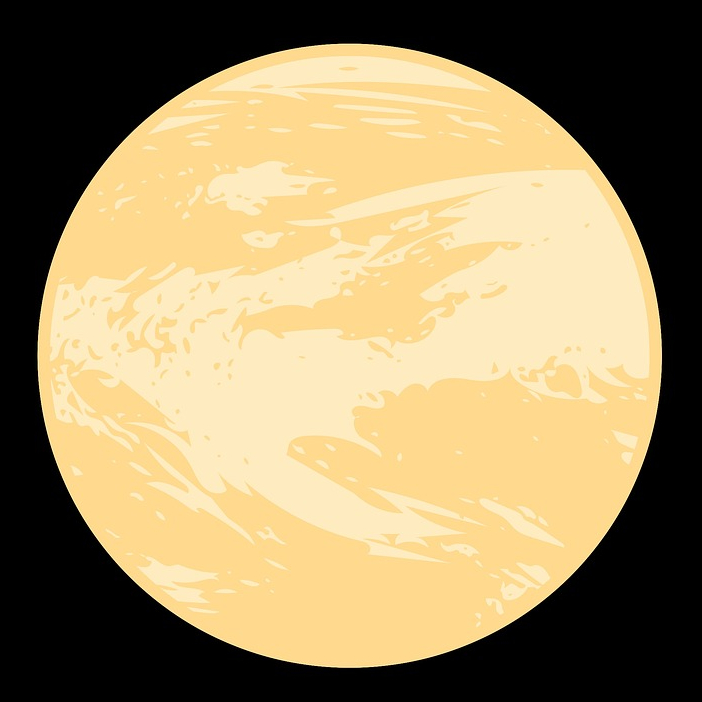


Venus is the second planet from the Sun in the solar system. Although it is quite similar to Earth in several ways, Venus is the hottest planet in the solar system, with an atmosphere of mostly carbon dioxide (CO2) and swirling clouds of poisonous, corrosive sulfuric acid (H2SO4).
| Venus | Earth | |
|---|---|---|
| Type of Planet | Terrestrial | Terrestrial |
| Moons | None | The Moon |
| Rings | None | None |
| Mass | 4.868 × 1024 kg | 5.972 × 1024 kg |
| Volume | 928,400,000,000 km3 | 1,083,000,000,000 km3 |
| Closest Distance to Sun | 107,500,000 km | 147,100,000 km |
| Furthest Distance from Sun | 108,900,000 km | 152,100,000 km |
| Average Orbital Speed | 126,100 kph | 107,200 kph |
Every planet except Venus, including Earth, spins from west to east. While Uranus spins almost on its side, Venus is the only planet that actually spins from east to west. Astronomers still aren't sure exactly why this is, but have hypothesized that Venus was struck by a massive space object at one point in time.
Although it obviously isn't a star, Venus has been called both the morning star and the evening star because, depending on its current position in its orbit, it can easily be seen before sunrise or just after sunset. You can try spotting Venus without a telescope by looking for the brightest "star" in the sky that isn't twinkling.